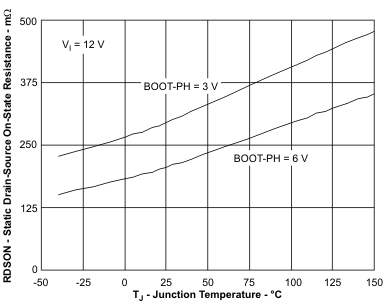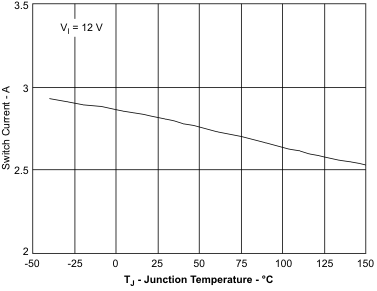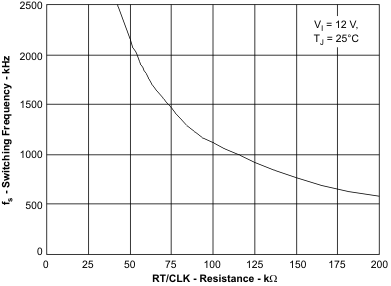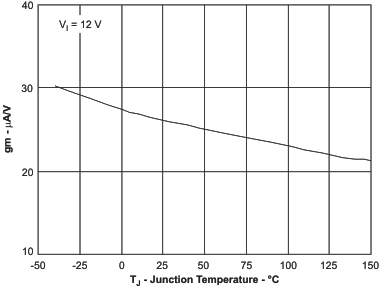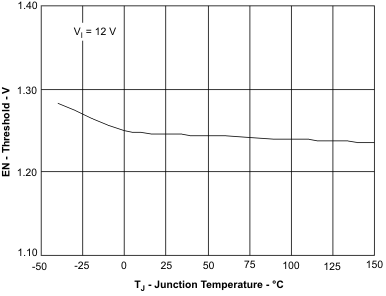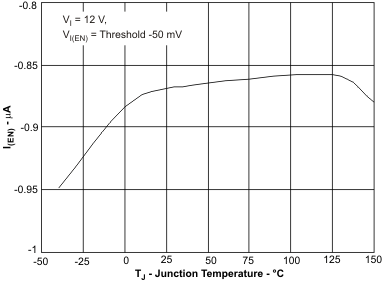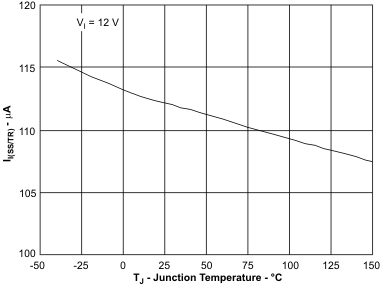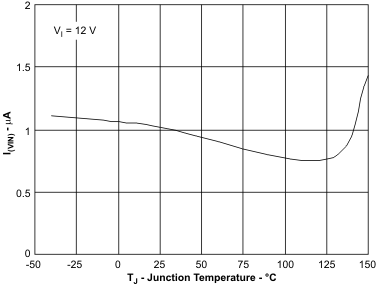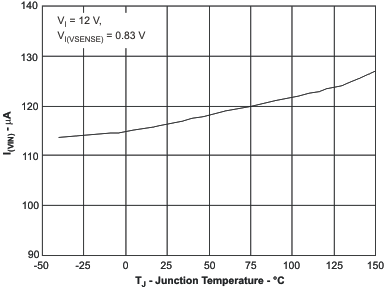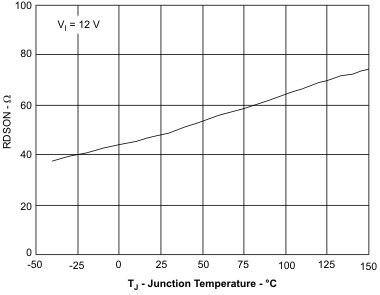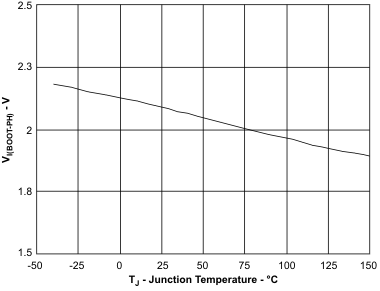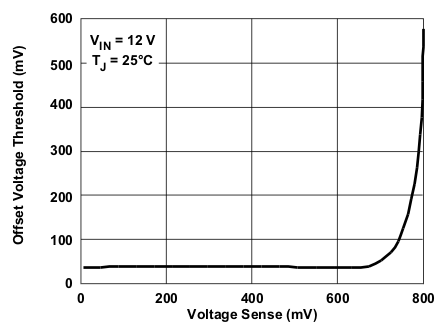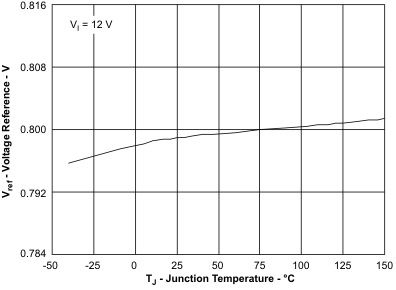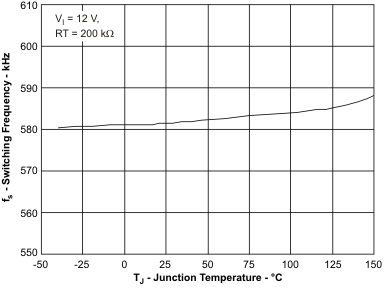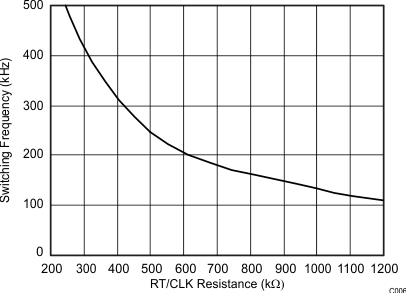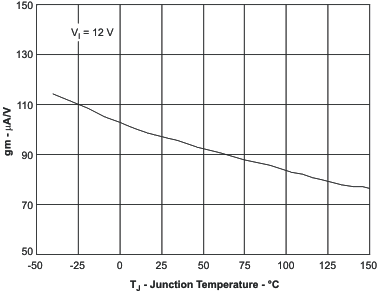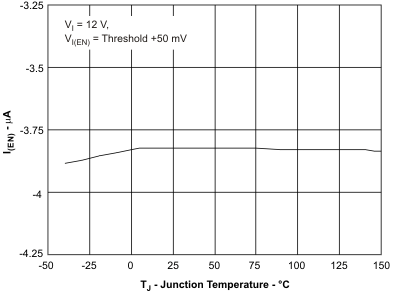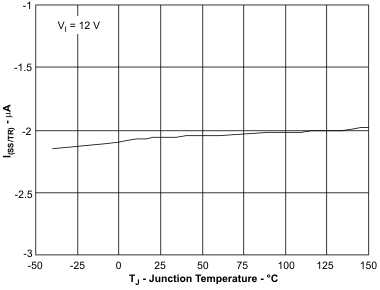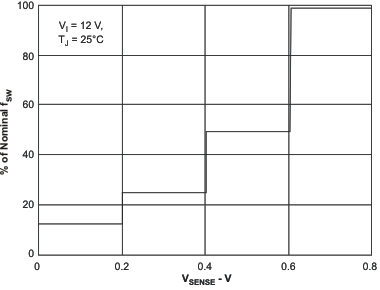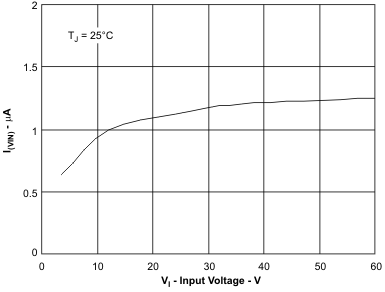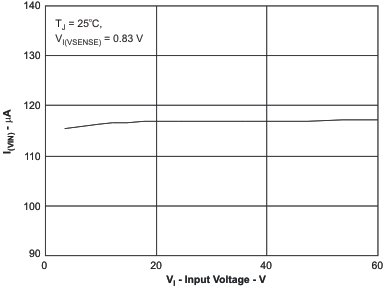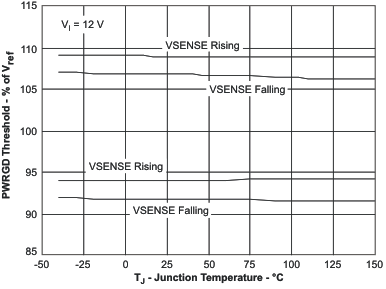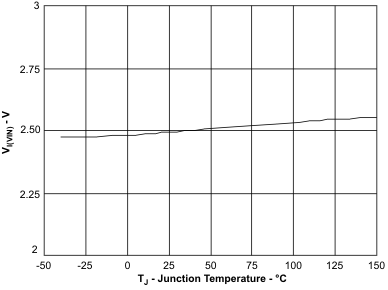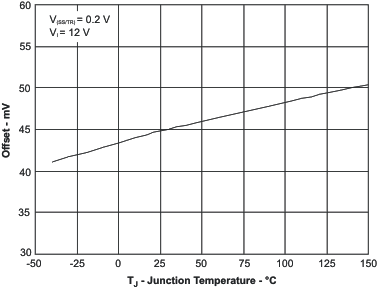SLVSB56C May 2012 – February 2014 TPS54160 , TPS54160A
PRODUCTION DATA.
- 1 Features
- 2 Applications
- 3 Description
- 4 Simplified Schematic
- 5 Revision History
- 6 Terminal Configuration and Functions
- 7 Specifications
-
8 Detailed Description
- 8.1 Overview
- 8.2 Functional Block Diagram
- 8.3
Feature Description
- 8.3.1 Fixed Frequency PWM Control
- 8.3.2 Slope Compensation Output Current
- 8.3.3 Pulse Skip Eco-mode
- 8.3.4 Bootstrap Voltage (BOOT)
- 8.3.5 Low Dropout Operation
- 8.3.6 Error Amplifier
- 8.3.7 Voltage Reference
- 8.3.8 Adjusting the Output Voltage
- 8.3.9 Enable and Adjusting Undervoltage Lockout
- 8.3.10 Slow Start and Tracking Pin (SS/TR)
- 8.3.11 Overload Recovery Circuit
- 8.3.12 Sequencing
- 8.3.13 Constant Switching Frequency and Timing Resistor (RT/CLK Pin)
- 8.3.14 Overcurrent Protection and Frequency Shift
- 8.3.15 Selecting the Switching Frequency
- 8.3.16 How to Interface to RT/CLK Pin
- 8.3.17 Power Good (PWRGD Pin)
- 8.3.18 Overvoltage Transient Protection
- 8.3.19 Thermal Shutdown
- 8.3.20 Small Signal Model for Loop Response
- 8.3.21 Simple Small Signal Model for Peak Current Mode Control
- 8.3.22 Small Signal Model for Frequency Compensation
- 8.4 Device Functional Modes
-
9 Application and Implementation
- 9.1 Application Information
- 9.2
Typical Application
- 9.2.1 Design Requirements
- 9.2.2
Detailed Design Procedures
- 9.2.2.1 Selecting the Switching Frequency
- 9.2.2.2 Output Inductor Selection (LO)
- 9.2.2.3 Output Capacitor
- 9.2.2.4 Catch Diode
- 9.2.2.5 Input Capacitor
- 9.2.2.6 Slow Start Capacitor
- 9.2.2.7 Bootstrap Capacitor Selection
- 9.2.2.8 Under Voltage Lock Out Set Point
- 9.2.2.9 Output Voltage and Feedback Resistors Selection
- 9.2.2.10 Compensation
- 9.2.2.11 Power Dissipation Estimate
- 9.2.3 Application Curves
- 10Power Supply Recommendations
- 11Layout
- 12Device and Documentation Support
- 13Mechanical, Packaging, and Orderable Information
Package Options
Mechanical Data (Package|Pins)
- DGQ|10
Thermal pad, mechanical data (Package|Pins)
- DGQ|10
Orderable Information
7 Specifications
7.1 Absolute Maximum Ratings(1)
Over operating temperature range (unless otherwise noted).| VALUE | UNIT | |||
|---|---|---|---|---|
| MIN | MAX | |||
| Input voltage | VIN | –0.3 | 65 | V |
| EN(2) | –0.3 | 5 | ||
| BOOT | 73 | |||
| VSENSE | –0.3 | 3 | ||
| COMP | –0.3 | 3 | ||
| PWRGD | –0.3 | 6 | ||
| SS/TR | –0.3 | 3 | ||
| RT/CLK | –0.3 | 3.6 | ||
| Output voltage | BOOT-PH | 8 | V | |
| PH | –0.6 | 65 | ||
| PH, 10-ns Transient | –2 | 65 | ||
| Voltage Difference | PAD to GND | ±200 | mV | |
| Source current | EN | 100 | μA | |
| BOOT | 100 | mA | ||
| VSENSE | 10 | μA | ||
| PH | Current Limit | A | ||
| RT/CLK | 100 | μA | ||
| Sink current | VIN | Current Limit | A | |
| COMP | 100 | μA | ||
| PWRGD | 10 | mA | ||
| SS/TR | 200 | μA | ||
| Operating junction temperature | –40 | 150 | °C | |
(1) Stresses beyond those listed under absolute maximum ratings may cause permanent damage to the device. These are stress ratings only and functional operation of the device at these or any other conditions beyond those indicated under recommended operating conditions is not implied. Exposure to absolute-maximum-rated conditions for extended periods may affect device reliability.
(2) See the Enable and Adjusting Undervoltage Lockout section of this data sheet for details.
7.2 Handling Ratings
| MIN | MAX | UNIT | |||
|---|---|---|---|---|---|
| TSTG | Storage temperature | –65 | 150 | °C | |
| VESD(1) | Human Body Model (HBM) ESD Stress Voltage (2) QSS 009-105 (JESD22-A114A) |
TPS54160 | 1 | kV | |
| Human Body Model (HBM) ESD Stress Voltage (2) QSS 009-105 (JESD22-A114A) |
TPS54160A | 2 | kV | ||
| Charged Device Model (CDM) ESD Stress Voltage (3) QSS 009-147 (JESD22-C101B.01) |
500 | V | |||
(1) Electrostatic discharge (ESD) to measure device sensitivity and immunity to damage caused by assembly line electrostatic discharges in to the device.
(2) Level listed above is the passing level per ANSI, ESDA, and JEDEC JS-001. JEDEC document JEP155 states that 500-V HBM allows safe manufacturing with a standard ESD control process.
(3) Level listed above is the passing level per EIA-JEDEC JESD22-C101. JEDEC document JEP157 states that 250-V CDM allows safe manufacturing with a standard ESD control process.
7.3 Recommended Operating Conditions
over operating free-air temperature range (unless otherwise noted)| MIN | MAX | UNIT | ||
|---|---|---|---|---|
| VIN | Supply input voltage range | 3.5 | 60 | V |
| VO | Output voltage range | 0.8 | 58 | V |
| IO | Output current range | 0 | 1.5 | A |
| TJ | Junction Temperature | –40 | 150 | °C |
7.4 Thermal Information
| THERMAL METRIC(1) | TPS54160 TPS54160A |
UNITS | ||
|---|---|---|---|---|
| DGQ (10 PINS) | DRC (10 PINS) | |||
| θJA | Junction-to-ambient thermal resistance (standard board) | 62.5 | 40 | °C/W |
| θJCtop | Junction-to-case (top) thermal resistance | 83 | 65 | |
| θJB | Junction-to-board thermal resistance | 28 | 8 | |
| ψJT | Junction-to-top characterization parameter | 1.7 | 0.6 | |
| ψJB | Junction-to-board characterization parameter | 20.1 | 7.5 | |
| θJCbot | Junction-to-case (bottom) thermal resistance | 21 | 7.8 | |
(1) For more information about traditional and new thermal metrics, see the IC Package Thermal Metrics application report, SPRA953.
7.5 Electrical Characteristics
TJ = –40°C to 150°C, VIN = 3.5 to 60V (unless otherwise noted)7.6 Typical Characteristics
